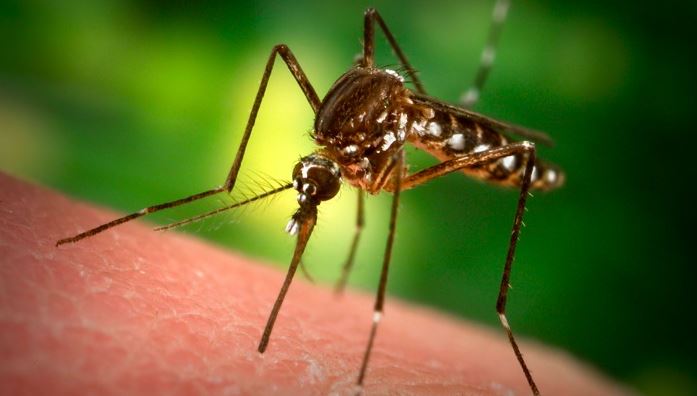Mosquito control in Hazelgreen can be used to banish mosquitoes from your yard. By also using a mosquito barrier around your yard or garden, you can keep them out and enjoy these warm summer evenings as you should. So how do you achieve this? What is involved and how is different to any other method of mosquito control? Here are the steps involved in ridding your yard of these flying pests once and for all.

Get Professional Mosquito Control For Hazelgreen
1. The Initial Survey First, you need a technician to carry out a survey of the extent of the problem. It is important to identify a perimeter where you want to stop them entering, and then those areas within it where mosquitoes can breed. There is little point in closing the door if they are already inside breeding. An initial survey will establish where mosquitoes currently tend to rest between attacks and also identify possible breeding areas. This is the best place to start for mosquito control in West Virginia.
2. Initial Mosquito Control Operation The mosquito control operation begins by dealing with the insects currently active and breeding inside the yard perimeter. They tend to rest in a dark and moist environment, such as deep in vegetation, long grass and dense shrubbery. A mosquito spray will normally be used in these areas, and also on the underside of leaves of bushes and shrubs where they also like to hide.
Such sprays last 28 days before needing repeated, but a repeat treatment should not be necessary if a mosquito misting system, described later, is used as a barrier. The initial treatment helps to eradicate any active insects while also preventing them from mating. Only female mosquitoes bite, because they need the protein in blood to form their eggs. The males feed on nectar, as do the females when not actively breeding. Mosquitoes lay their eggs in water: actually on top of the surface, often in the form of rafts of hundreds of eggs.
For that reason, it is also necessary to treat ponds or other areas of still water that can be used by mosquitoes for their eggs. The eggs hatch into larvae, also known as wigglers, which develop into pupae and finally adult mosquitoes. This life cycle takes on average from 10 -14 days in the USA, but depends a great deal on the species. All of this needs water – even just an old can lying in your yard. Other favorite areas are old tires, buckets and pails, bird baths and any form of standing water that lies for several days.
A mosquito can lay over 100 eggs at a time every three days, and can lay many hundreds of eggs in her lifetime. The initial spraying will eradicate existing adults for your mosquito control, and it is also necessary to remove anywhere the eggs can be laid and hatched. Obvious containers will be removed, and ponds and pools treated. Ponds containing fish are unlikely to be infested with larvae because the fish will feed on them.
3. Mosquito Barrier: Mosquito Misting System The above treatment is a standard method of mosquito control. To maximize their elimination, a mosquito barrier can then be set up around the perimeter. This consists of a mosquito misting system which automatically sprays a fine mist of insecticide through nozzles set up around the area to be protected. The nozzles are fed from individual containers or a central tank and activated at intervals when the pests are most active: early morning, dusk and the first few hours of night.
By using both these system: an initial spray treatment and the mosquito misting system, it is possible to clear a yard and then create a mosquito barrier that prevents new insects from entering its perimeter. This is the most effective method of mosquito control available. While many people are happy with just the initial spraying, and 21-day repeat treatments, those with a high level of activity in their yard, garden or even public areas, prefer the more comprehensive mosquito barrier.

Benefits Of Mosquito Control In 26376
People who live in hot humid climates become familiar with the high-pitched whine that mosquitoes on the prowl can make, especially in the quiet of the night. Some people can make a sport of allowing a mosquito to land on the skin and be lulled into sucking blood before they are splattered dead with a vengeance. There are different species of mosquitoes and they can be found in almost all places of the globe.
Regardless of specie however, all mosquitoes go through four stages in their life cycle, from egg to larva to pupa to a full-grown adult mosquito. The lifespan of a mosquito is quite short. A female may live from 3 – 100 days while a male may last from about 10 – 20 days during which period they may get to feast on human blood, their favorite source of sustenance, a good number of times. A female mosquito can lay up to 250 eggs at a time, usually after gorging on your blood to provide enough nutrients for all these eggs.
The eggs are usually laid on the surface of any stagnant body of water. Among the favorite places for laying eggs are ponds, moats, marshlands, vases or flowerpots inside the house, any place with water where they can germinate until they are hatched which is only about 48 to 72 hours.
Check out our other extermination services for Hazelgreen, WV:
- Kill Ants
- Hornet Infestation
- Rodent Exterminator
- Kill Gnats
- Fruit Fly Exterminator
- Tick Infestation
- SilverFish Fumigation
- Kill Millipedes
Mosquitoes cannot thrive in fast moving bodies of water like rivers or streams. Once a mosquito egg hatches, it becomes a larva or more commonly known as a “wriggler,” a longish creature like a pin with a head and a tail. They can be seen actively wriggling to the surface and down to the bottom of the body of water, they have been born into.
After five or six days, they enter the pupa stage with a more pronounced head and after two or three more days are ready to metamorphose into the adult mosquito as we know them. At the pupa stage, they no longer wriggle but instead somersault from the top of the water to the bottom. Generally, mosquitoes eat plant nectar, honey dew or any other sugary substances. But their favorite, especially the females, is human blood. Some species are also known to bite and suck the blood of birds or other animals such as dogs and horses.
The females “bite” using a pair of very thin tubes through which they drip a pain suppressor mixed with their saliva into the bloodstream and then suck your blood. So you really do not feel pain while a mosquito bites and sucks your blood. An anti-coagulant is also introduced into your system through this same tube to keep the blood flowing. A female mosquito, after gorging on your blood is now fortified to start the four-stage life cycle of the mosquito all over again.
Because they tap into a person’s blood, mosquitoes are known to be transmitters of diseases like malaria, dengue fever, encephalitis and yellow fever among humans. Mosquito-borne diseases cause the most damage among men, especially those who live in the tropics. Mosquito bites can also cause severe irritation among humans and can be easily seen as red rounded welts on the skin.
Among animals, mosquito bites can also cause dogs to get heart worms, the West Nile virus and equine encephalitis. These are reasons to seriously consider mosquito control. To control the spread of mosquito-borne diseases, a vigorous campaign to break the life-cycle of the mosquito must be launched. This can be done by spraying insecticides on slow-moving bodies of water and by getting rid of any containers that may contain stagnant water where they can breed.
However, the easiest and most convenient method of killing mosquitoes is the mosquito misting system. A mosquito control system is installed on your property and automatically programmed to spray for these biting pests early in the morning and again in the evening. This method is consistent and leaves you free to enjoy your yard without worrying about mosquitoes that are infesting your property.

